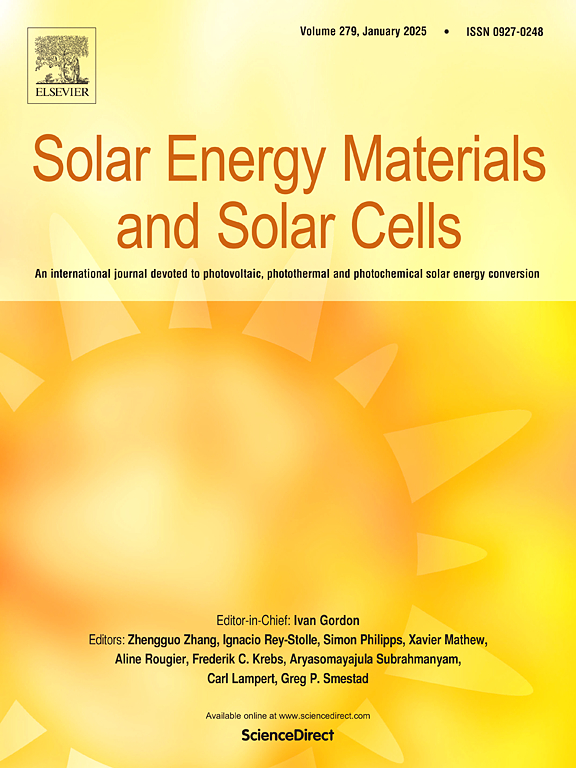Solid-state selenium diffusion processing to prepare Sb2(S,Se)3 film for planar heterojunction solar cells
IF 6.3
2区 材料科学
Q2 ENERGY & FUELS
引用次数: 0
Abstract
Excellent optoelectronic properties make antimony selenosulfide an appealing light absorbering material in the solar cell research. Herein, we present a novel solid-state selenium diffusion (SSD) method featuring the reaction of solid-state selenium with precursor film to prepare Sb2(S,Se)3 film for efficient solar cells. The effects of reaction temperature and selenium layer thickness on the structure, composition and morphology of deposited film were investigated. Appropriate selenization can eliminate structural defects, while excessive selenization can lead to porous uncompact, loose morphology. Moreover, the band-gap, photo response and carrier transport characteristics which are highly correlated with device performance dependent on the S/Se ratio of antimony selenosulfide Sb2(S,Se)3 can be adjusted by SSD process (selenium layer thickness and reaction temperature). The optimized Sb2(S,Se)3 solar cell exhibited an efficiency of 6.37 % with a high Jsc of 19.17 mA/cm2 and FF of 55.53 % under AM 1.5 illumination.
求助全文
约1分钟内获得全文
求助全文
来源期刊

Solar Energy Materials and Solar Cells
工程技术-材料科学:综合
CiteScore
12.60
自引率
11.60%
发文量
513
审稿时长
47 days
期刊介绍:
Solar Energy Materials & Solar Cells is intended as a vehicle for the dissemination of research results on materials science and technology related to photovoltaic, photothermal and photoelectrochemical solar energy conversion. Materials science is taken in the broadest possible sense and encompasses physics, chemistry, optics, materials fabrication and analysis for all types of materials.
 求助内容:
求助内容: 应助结果提醒方式:
应助结果提醒方式:


